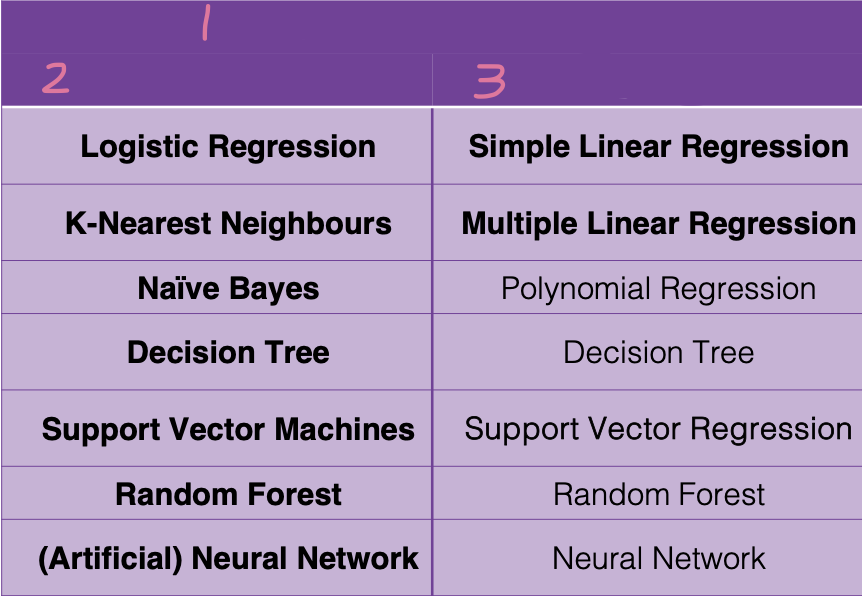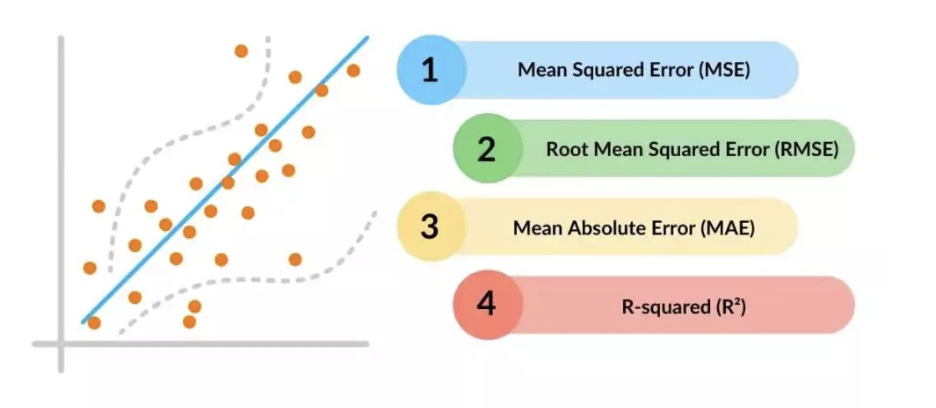4-1 algorithms in ML, linear regression, and logistic regression
1/24
There's no tags or description
Looks like no tags are added yet.
Name | Mastery | Learn | Test | Matching | Spaced |
|---|
No study sessions yet.
25 Terms
model
a mathematical representation of a real world process; a predictive model forecast a future outcome based on past behaviors
algorithm
a set of rules used to make a calculation or solve a problem
regression
a prediction method whose output is a real number, a value that represents a quantity along a line
classification
a prediction method that assigns each data point to a predefined category, a type f operating system
target
dependent variable, is the output of the model or the variable you wish to predict
supervised learning
classification
regression

trade off between accuracy and interpretability

model interpretability
similar models like linear regression and decision trees ar easily interpretable but might underperform
crucial for trust, regulatory compliance, and clinical adoption
model performance
complex models like deep neural networks often deliver higher performance but were less interpretable
choosing between interpretability and performance involves balancing accuracy with the need for understandable predictions
computational efficiency
training time
interference time
memory usage
scalability
bias variance tradeoff
complex models
capture intricate patterns
risk overfitting and may lack generalization
simple models
less detailed
more robust and generalize better to new data
balancing act
complex models
low bias
high variance
simple models
high bias
low variance
*find balance
linear regression
estimates the linear relationship between a scalar response and one or more variables
predicts continuous outcome based on one or more predictors/variables
relationship sare modeled using linear predictor functions whose unknown model parameters are estimated from the data

ordinary least squares
using gradient descent to minimize the sum of the squares of the residuals
the better the linear regression fits the data in comparison to the simple average, the closer the value of R2 is to 1
4 common regression metrics for linear regression

linearity
the change in the outcome variable should be proportional to the change in the predictor variables
independence
the observations should be independent from each other
homoscedasticity
the spread of residuals should be roughly the same across all values of the predicted outcome
normality
the errors should follow a normal distribution
advantages of linear regression
simple model
computationally efficient
interpretability of the output
disadvantages of linear regression
overly simplistic — cannot capture real world complexity
linearity assumption
severely affected by outliers
independence of variables
advantages of logistic regression
easier to implement, interpret, and very efficient to train
easily extend to multiple classes
good accuracy for many simple data sets and it performs well when the dataset is linearly separable
disadvantages of logistic regression
if the number of observations is less than the number of features, it may lead to overfitting
the major limitation is the assumption of linearity between the dependent variable and the independent variables
when to use linear regression
outcome is continuous and unbounded
assume linear relationship between predictors and the outcome
want to quantify the effect of each predictor on the outcome
when to use logistic regression
the outcome is binary (yes/no, 1/0)
want to estimate probabilities of an outcome
interested in the odds ratios for various predictors